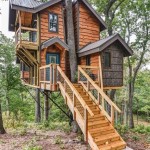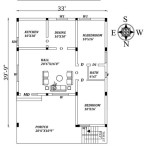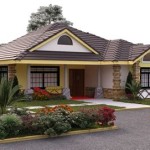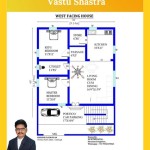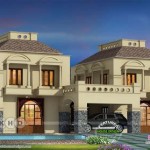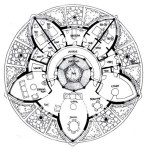Small Energy Efficient House Plans
Rising energy costs and a growing awareness of environmental impact have made energy-efficient homes increasingly popular. Small energy-efficient house plans offer an attractive option for individuals and families seeking to minimize their carbon footprint and reduce utility expenses while enjoying comfortable living spaces. These plans prioritize sustainable design elements and incorporate energy-saving features that contribute to both economic and ecological benefits.
Several key principles guide the design of small energy-efficient house plans. Passive solar design is a fundamental concept, utilizing the sun's energy for heating and cooling. This involves strategically positioning windows and incorporating thermal mass to absorb and release heat. Proper insulation plays a vital role in minimizing heat transfer, keeping interiors warm in winter and cool in summer. Airtight construction prevents drafts and air leakage, further enhancing energy efficiency. Finally, the selection of energy-efficient appliances and lighting contributes to lower energy consumption.
Orientation and site selection are crucial considerations in maximizing passive solar gain. Ideally, homes should be oriented to maximize southern exposure, allowing sunlight to penetrate windows during winter months for natural heating. Deciduous trees can be strategically planted on the south side to provide shade during the summer and allow sunlight in the winter. Careful consideration of the surrounding landscape and topography can also influence energy efficiency.
Building materials contribute significantly to a home's energy performance. Structurally insulated panels (SIPs) offer excellent insulation and airtightness. Insulated concrete forms (ICFs) provide similar benefits with added thermal mass. Reclaimed or sustainably harvested lumber reduces environmental impact. High-performance windows with low-E coatings minimize heat gain and loss. Selecting appropriate materials based on climate and budget is essential.
Efficient heating and cooling systems are critical components of energy-efficient homes. Heat pumps offer both heating and cooling capabilities, transferring heat between the indoor and outdoor environments. Geothermal heat pumps utilize the stable temperature of the earth for even greater efficiency. Solar thermal systems can pre-heat water, reducing the demand on conventional water heaters. High-efficiency furnaces and air conditioners are also important considerations.
Ventilation systems play a key role in maintaining indoor air quality and reducing moisture buildup, which can lead to mold and structural damage. Heat recovery ventilators (HRVs) and energy recovery ventilators (ERVs) exchange stale indoor air with fresh outdoor air while recovering heat or both heat and moisture, minimizing energy loss. Proper ventilation is crucial for a healthy and comfortable indoor environment.
Water conservation measures contribute to overall energy efficiency. Low-flow fixtures, such as showerheads and faucets, reduce water consumption. Dual-flush toilets offer options for different flushing volumes, conserving water. Rainwater harvesting systems can collect rainwater for irrigation and other non-potable uses. Graywater recycling systems can reuse water from showers and sinks for landscaping or toilet flushing, further reducing water usage.
Smart home technology can further optimize energy consumption. Programmable thermostats allow for automated temperature adjustments based on occupancy and time of day. Smart lighting systems can control lighting levels and turn lights off automatically when not needed. Energy monitoring systems provide real-time feedback on energy usage, allowing homeowners to identify areas for improvement and track their progress.
The benefits of small energy-efficient house plans extend beyond reduced energy bills. Lower energy consumption translates to a smaller carbon footprint, contributing to environmental sustainability. Improved indoor air quality enhances health and comfort. Reduced reliance on fossil fuels promotes energy independence. These benefits make small energy-efficient house plans an attractive option for environmentally conscious individuals and families.
Numerous resources are available for individuals interested in exploring small energy-efficient house plans. Online databases offer a wide selection of plans, often categorized by size, style, and features. Architects specializing in sustainable design can provide customized plans tailored to specific needs and site conditions. Builders experienced in energy-efficient construction can ensure proper implementation of sustainable building practices. Government agencies and non-profit organizations also offer resources and incentives for building energy-efficient homes.
Choosing a small energy-efficient house plan requires careful consideration of individual needs, budget, and local climate conditions. Evaluating different plan options, consulting with professionals, and thoroughly researching available resources are essential steps in the process. By prioritizing energy efficiency, homeowners can create comfortable, sustainable living spaces that benefit both their wallets and the environment.

Craftsman Style House Plan 2 Beds Baths 1600 Sq Ft 454 13 Plans Small Floor

Amazing Small Efficient House Plans 2 Energy Home Designs Design Homes

Passive House Plans Ekobuilt

Energy Efficient House Design

Energy Efficient Home Plans Ekobuilt

Home Designs Fsec

Energy Efficient House Plans Home Designs The Designers

Top 15 Energy Efficient Homes And Costs Ilrated

First Energy Efficient House In Kanto Japan 2024 Passive Homes Zero
This Entirely Customizable Dwelling Unit Raises The Bar In Energy Efficient Green Home Market Place Plans By Leap Adaptive

